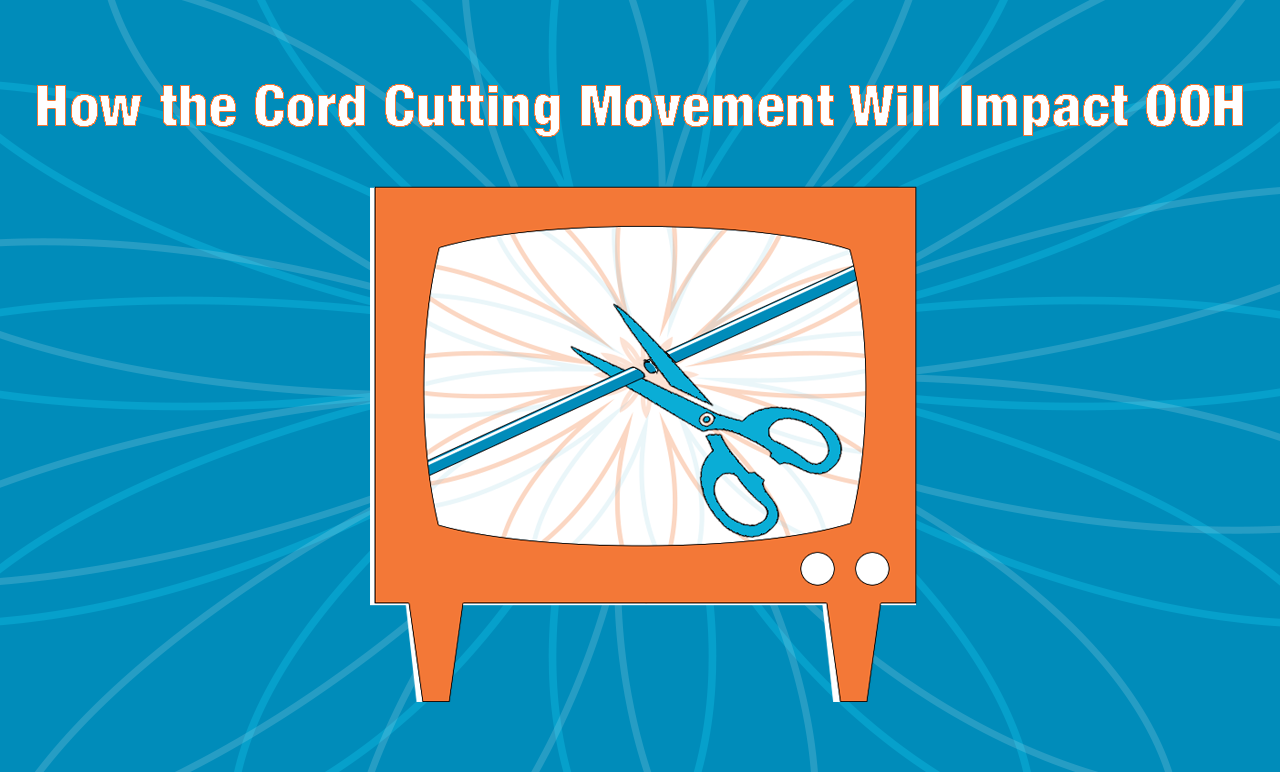
TV viewership habits have seriously changed in the past ten years. Consumers everywhere are forgoing their conventional cable TV subscriptions in favor of over-the-top (OTT) viewing services such as Netflix or Hulu. By doing so, these individuals are assuming the label of “cord cutters“, and becoming a part of the movement that is changing the way advertising dollars are spent. This post will examine the recent shift in linear television’s viewership, and anticipate the ways this movement could impact the OOH industry.
Currently, there ~22 million “cord cutters” and ~34 million “cord nevers” living in the US. This means that in 2018 about 17% of the total US population will have virtually no relationship with linear television. This declining viewership is causing lower ratings and increasingly ineffective ads. Even can’t-miss TV events, such as the Olympics and the Academy Awards, are being seen as less valuable advertising opportunities. Although TV advertising is still experiencing consistent growth, concerns surrounding rising ad prices and potential industry instability have caused some advertisers to shift their budgets away from this once-prominent medium.
One beneficiary of changing TV viewership habits is digital advertising. In fact, 2016 was the first year where digital advertising accounted for a larger portion of US ad spend than television advertising. As less money is spent on television advertising, marketers are pouring their budgets into digital and mobile ads instead. Popular internet-connected OTT networks are benefiting from this shift, but they aren’t the only ones. Digital companies like Facebook, Google, and Youtube are also optimizing their platforms for advertising and creating large amounts of viewable content to compete with both conventional and OTT networks.
With total ad sales expected to increase to by 1.6% in 2018, the race to occupy the space once inhabited by TV advertising is sure to be fierce. Although digital advertising is effective, it is incapable of dominating the advertising industry completely. Digital advertisers consistently combat intense competition, fleeting consumer attention spans, and a host of security threats. These concerns, coupled with out-of-home’s core competencies, will ultimately allow OOH to compete and thrive in the changing industry landscape. In fact, OOH is growing at a rate second only to digital.
The shift away from linear television and towards OTT media is allowing people to decide what they want to view, and at what time they want to view it. This results in many ads being passed over or ignored entirely. Unlike TV or digital advertising though, OOH advertising cannot be blocked or skipped. The physical elements of OOH advertisements make it unavoidable, and play a large role in it being the most noticed and engaged with ad format in the US.
Another appealing component of OOH is that it is one of the most trustworthy advertising mediums. A survey done by FEPE International reported that 24% of respondents found OOH ads to be the “most trustworthy”, while only 3% of those surveyed felt the same way about digital ads. In an age where credible information is becoming increasingly hard to find, consumers appreciate and gravitate towards the honesty of OOH.
In 2017, the OAAA reported that OOH is the “most efficient medium for driving online activity.” This ability to enhance digital advertising is another feature that will allow OOH to compete in the changing market landscape. As digital becomes increasingly important companies will utilize OOH to maximize their investment. OOH is set to grow alongside digital, and after examining current trends that should definitely be seen as a positive.
Ad budgets will always shift to the mediums that allow each dollar to make its greatest impact. With less attention being paid to TV, other formats will aim to capitalize on this vacancy. Digital might be primed for growth, but so is OOH. Study after study confirms that OOH and digital advertisements are more powerful when they work together. As more advertisers become aware of this fact, the increased convergence of digital and OOH becomes very likely. The void left open by linear TV could very well be filled by both digital and OOH, working together to create more effective campaigns.
If you’re looking for incredible OOH opportunities check out DOmedia, host to the largest database of out-of-home vendors in the US, and find one today!




